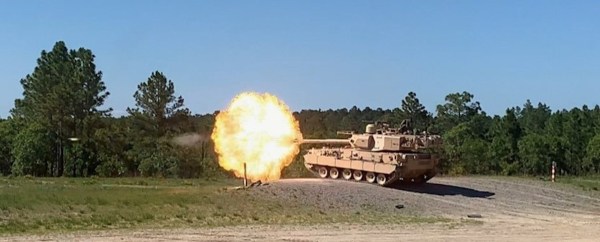Army’s new vice chief seeks to drive strategic modernization
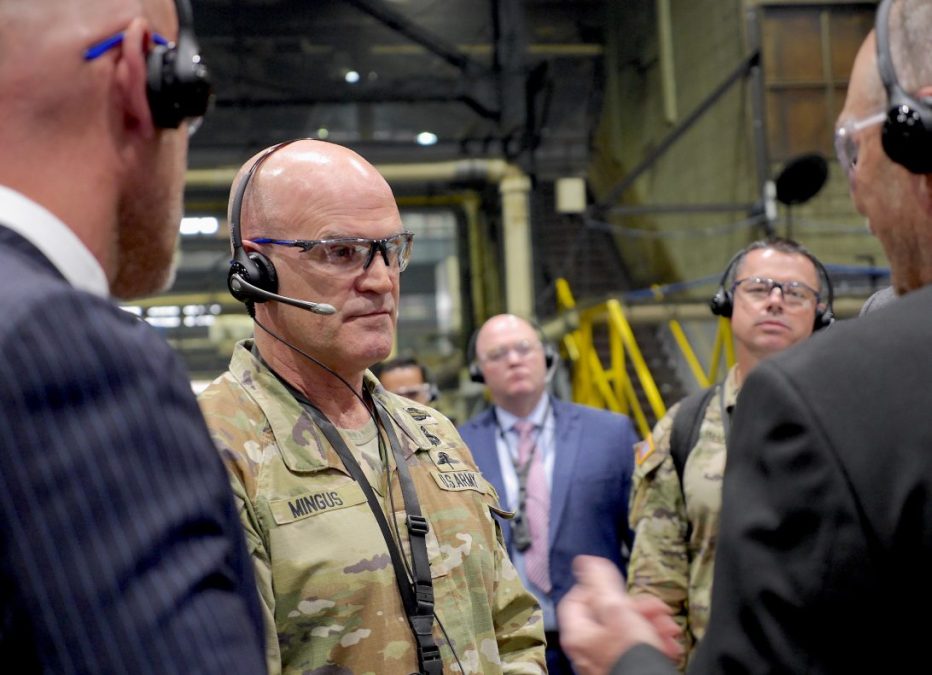
Early into his tenure as the Army’s new vice chief of staff, Gen. James Mingus is bullish about breaking “paradigms” to modernize how the service builds, buys and deploys technology.
That strategic intent is shaped by his experiences as a soldier and special operator — and commanding at every echelon, from company to division.
“When I left the conventional Army in the late 1990s, early 2000s, there wasn’t a lot of information technology in our formations. There were a few things that had been digitized, but not to the scope and scale that we have today. And so, I left and kind of moved into the Ranger [Special Operations Forces] community for about a decade, where I was exposed to folks like [retired leaders of Joint Special Operations Command Army Gen. Stan McChrystal and Navy Adm. Bill McRaven] who really pushed the technology envelope. They could see where it was taking us as a military, and so there was a lot of investment in that technology, which allowed us to have a global network — getting after the fight that we did, from Fort Liberty — Fort Bragg — all the way to the Middle East and that network-of-networks,” Mingus told DefenseScoop in an exclusive interview.
“Then when I came back to the conventional Army in the 2010-2012 timeframe, I realized just how far behind the conventional Army was in the complexity that we had built into our networks and our IT systems,” he explained. “There was a recognition that we could do much better.”
Mingus received his fourth star on Jan. 4, when he was sworn in as the Army’s No. 2 general officer and principal deputy to Army Chief of Staff Gen. Randy George.
The proud Iowan started his military career in 1981, and since then he’s deployed a dozen times to Iraq and Afghanistan, commanded the 82nd Airborne Division, and, among many other roles, led the Mission Command Center of Excellence at the Army Combined Arms Center.
“It’s in charge of the Army’s network and is the force-mod proponent for the tactical network. And the other part, which was luck and timing, was that Gen. Mark Milley was our 39th Chief of Staff of the Army, and he decided that he wanted to fix the Army’s network. So, to his credit, we put a lot of energy behind it, and the network modernization strategy that we have today is what we’re kind of driving to fruition,” Mingus said.
Now, as he helps run the Army as vice chief, Mingus is keen to see the military accelerate its delivery and convergence of assets, data and technology platforms. This aim was on display March 20, when DefenseScoop accompanied Mingus on a day trip to Pennsylvania for a tour of the Scranton Army Ammunition Plant.
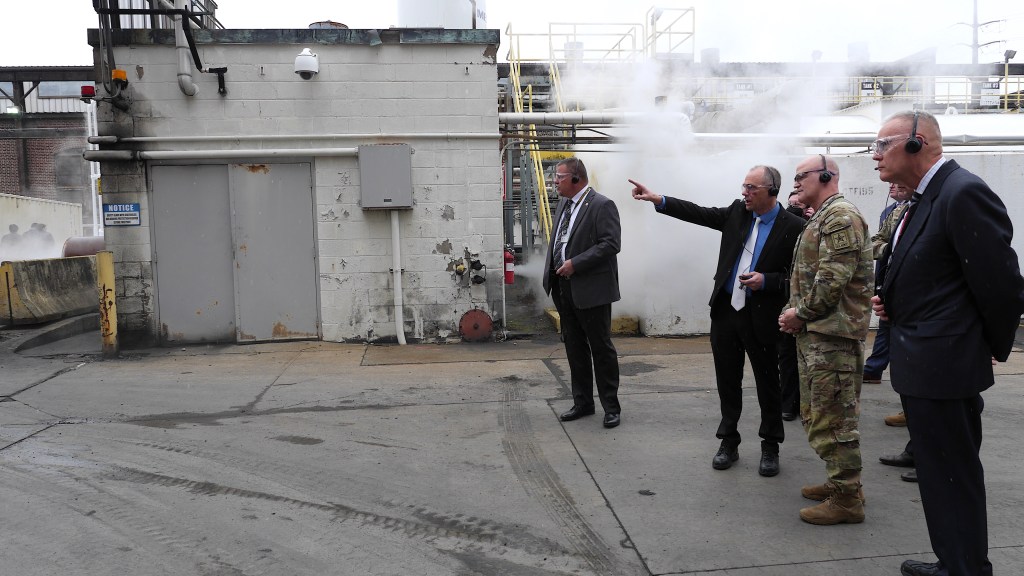

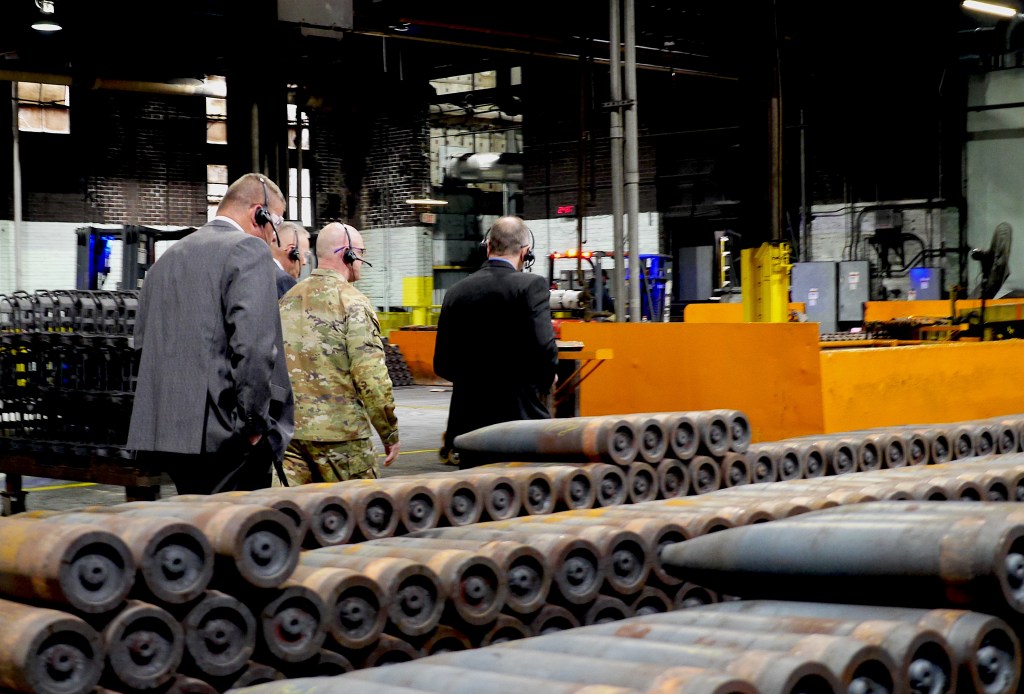
There, welders and other hands-on workers are ramping up the making of 155mm metal artillery parts — with a newly stated goal of increasing their production to 35,000 per month by Sept. 25.
As Ukraine and Israel increasingly tap into the U.S. arsenal, the Army is hustling to produce approximately 70,000 to 80,000 155mm rounds per month by the end of 2024, and 100,000 per month by late 2025.
“What I was most impressed with — and we talked a little bit about this when we were on the [factory] floor — is that they’re investing in new technology, but they’re also capitalizing on the stuff that they have. And so instead of completely divesting of it, that which they can still salvage, they’re renovating that and making use of their legacy platforms too,” Mingus told DefenseScoop.
Invested in the mission
The munitions plant in Scranton is one of 23 such facilities inside the Army’s organic industrial base.
“We have depots that rebuild equipment, we have others that produce small arms. I mean, it’s a whole host. And so what we saw was a very micro piece, but there’s a broader architecture out there that provides a ton of services for the Army and the other services that we are now realizing that we need to continue to invest in and modernize across the board,” Mingus said.
Owned by the federal government and operated by General Dynamics Ordnance and Tactical Systems, the Scranton plant has been in the spotlight recently for receiving millions in Pentagon funding to surge its production capacity of artillery shells.
“Everybody is very invested in the mission — they get it. When we do have senior leaders come here, they always engage the workforce,” a senior official from the contractor told DefenseScoop during the tour.
The ammunition plant has hosted multiple civilian and military leaders in recent months.
“Had [Gen. Mingus and his entourage] come last week, you would have seen something completely different. If he came next week, again, different. So yeah, I think what he saw versus people who have come to pass is a significant amount of progress,” the senior official said.
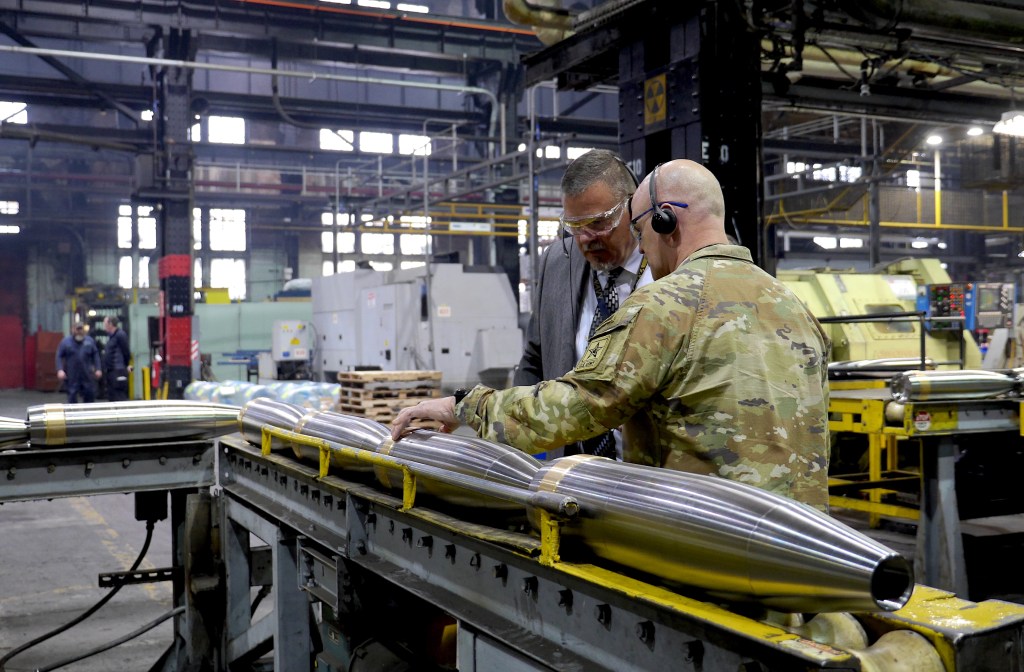
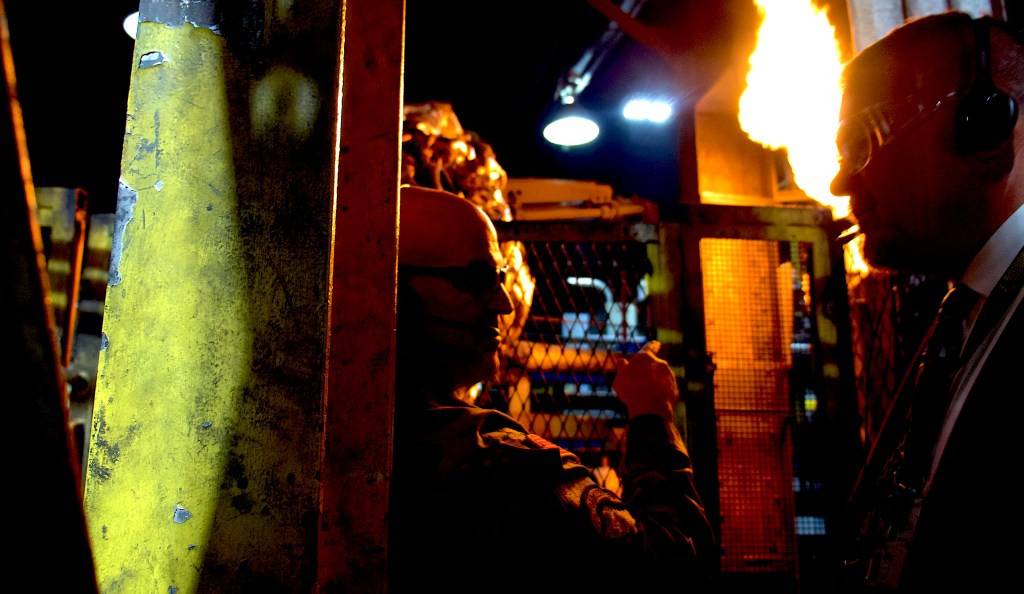

In order to drastically boost production, the contractor intends to expand and modernize its line production capabilities, hire more employees and build new facilities to accommodate that growth.
“[There won’t be] AI robots walking around the floor, but just automated material-handling solutions. So instead of a person picking up a shell out of a machine or putting it in, you would have some sort of automated solution,” the senior official told DefenseScoop.
Between the Marine Corps and the Army, according to Mingus, the U.S. military consumes on average roughly “18,000 rounds a month for our own use.”
“I’ve been dealing with the 155mm challenge for several years now. When the Russia-Ukraine conflict kicked off in Feb. 2020, we began to give them our 155 systems a couple of months later,” he said.
After Russia’s latest invasion, the U.S. in early 2022 shipped the first cache of M777 howitzers to Ukraine.
“And they used those to great effect and were able to utilize them in a very good way that greatly amplified their ability to be effective on the battlefield. But their consumption rates rose very quickly,” Mingus explained.
Initially, in this latest intensification of the conflict, Ukraine went through about 30,000 rounds per month. “Then, during the two big offensives, there were times where they were consuming in excess of 100,000 rounds a month,” Mingus noted.
Meanwhile, in the U.S., plants were only producing about 14,000 shells per month, given the previous surplus.
“We had some in the stockpile, but that very quickly was eroded — and so people woke up and realized we needed to ramp up production very quickly. So, our [Acquisition, Logistics and Technology (ASA)ALT)) team, under the leadership of Army Assistant Secretary Doug Bush and Lt. Gen. Rob Collins] really went into full-gear, and we got some help from [the Office of the Secretary of Defense] and our organic industrial base,” Mingus said.
In his view, progress observed in the sprawling Pennsylvania factory “was a result of that.”
“Between that plant and the others, we’re moving — where we were at 14,000 just two years ago, then 28,000 in this month, and in the next month we’ll press to get to [producing] 35,000 to 38,000 rounds a month. So it’s pretty amazing to see the money that we invested there is paying off,” the vice chief said.
Still, he emphasized that at this point more ammunition funding is needed to ensure that the U.S. can continue to support Ukraine, Israel and Taiwan.
That sentiment is also felt by other Defense Department and military leadership.
“We are already on a path to produce around 70,000 to 80,000 shells a month by the end of this calendar year or early next year. In addition, the department has a further goal of producing [approximately 100,000] rounds per month by late 2025. However — without further funding — we will be unable to achieve our [100,000] round per month objective,” a Pentagon spokesperson told DefenseScoop on Wednesday.


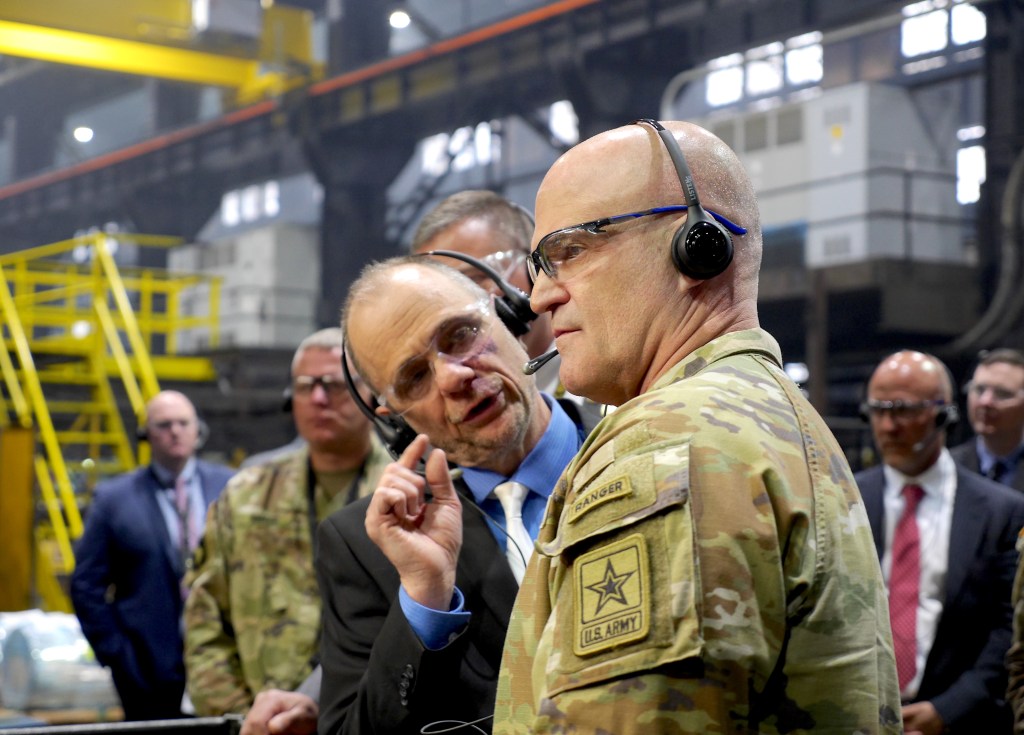
Notably, on top of generating standard 155mm high-explosive rounds, the plant is also set to supply a 155mm “boosted artillery round” known as the M1128.
While those standard 155mm munitions are “limited to about a 20 to 22 km range,” Mingus noted, the Army is now producing “the rocket-assisted or wrap-variant that puts a little rocket motor on it and it’ll shoot out to 30 to 32 km.”
The general said the simplified, cheaper variant would give the Army an additional 8 km — “just by how they are rifled and the technology associated with the round itself.”
“And so from conventional employment of artillery, which is our greatest and most effective weapon system on the battlefield — when you’re talking about mass artillery — that [additional] 8 km will make a big difference,” Mingus said.
“The battlefield that we grew up with, we kind of parse it out in the ‘deep fight,’ a ‘close fight,’ … and ‘rear area’ or ‘support area.’ And it’s going to allow us to extend that ‘close fight,’ because of the extended ranges of our conventional high explosive rounds, which gives us an advantage because the further out that you can take out your adversary, the better for your maneuver formations inside,” he added.
Those in-production M1128s were one of multiple topics of discussion during a working lunch that Mingus participated in with plant and General Dynamics Ordnance and Tactical Systems executives. In that conversation, he asked for feedback on a number of ideas, including whether there might be opportunities in this work for collaboration between the Australia, United Kingdom and United States (AUKUS) military alliance.
“I mean, those are all policy decisions that would need to be made between the three countries involved. But in the Pillar II portion of AUKUS, things that those three countries, all of us, can mutually benefit from — either from a technological standpoint or with co-production — those are all things that are interesting to the three countries to pursue together,” Mingus said.
Keep pace and transform
At each station on his tour across the spread-out manufacturing complex, Mingus made a point to stop and shake hands with workers on the ground and explicitly tell them that their efforts “are saving lives.”
“When you’re working in a plant like that, in the middle of America … you don’t always see the finished product, let alone see what it does on the other end when it gets to its destination. And so I just felt like it was important to share with them that what they’re doing is critically important for our nation and for the lives of folks that are in harm’s way,” the general told DefenseScoop.
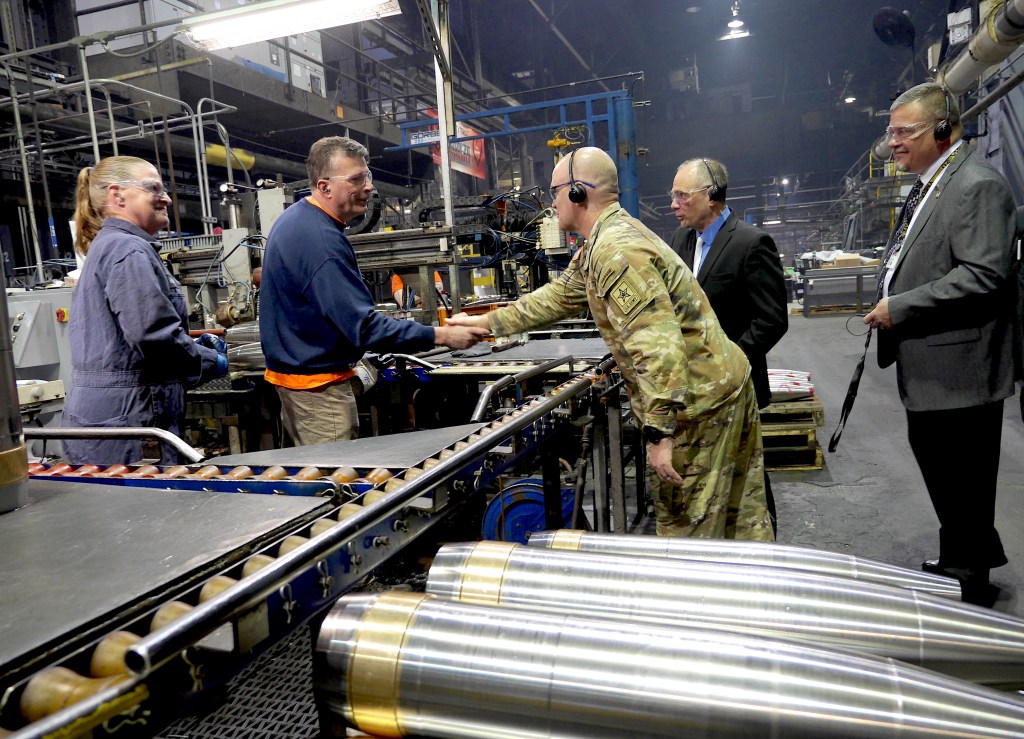


He has plans to visit more of the Army’s 23 plants in the months to come.
But these oversight pursuits are just one small portion of his many responsibilities as vice chief — and Mingus is looking to push toward innovation and modernization beyond just the realm of weapons production.
“Everybody loves to talk about how the time is now — this sense of urgency. But when you look at the world events that are happening right now, I mean we really are at a point where doing things the old way — doing things the way we’ve always done them, the typical bureaucracy, the typical programmatic way in which we approach transformation, continuous transformation, transformation in contact — we’re going to have to break some of those paradigms to be able to keep pace and transform at a rate that is going to keep pace with our adversaries,” he explained.
Flexible funding mechanisms mark one tool he and other Army leaders are eyeing to help tackle those paradigms.
“So, using [uncrewed aerial systems and] counter-UAS — we have that program currently in a bunch of different portfolios. And then, in those portfolios, there’s multiple individual lines for individual systems, instead of broad categories of just UAS,” Mingus said.
“Say I want to buy 100 of this brand this year. But there’s a better brand that comes out next year and I want to buy 100 of them instead of being locked to that single line. Or, instead of having multiple individual radio lines, maybe you have one that allows you flexibility to move around and buy different things — because the technology is changing so rapidly that if you get stuck with a single program, then you’re not going to be able to always maximize the technology as it changes,” he further noted.
Recognizing the need “to build up trust with a lot of folks on how we would do that and how we would manage it” Mingus said he and Gen. George have decided to prioritize UAS, counter-UAS and electromagnetic warfare capabilities as prototypes to test out the first flexible funding initiative.
“So he’s going to start with those three, then we’ll expand as time permits,” Mingus said.
It’s clear he appreciates the technological progress the Army has made during his career so far, but the vice chief is still certain “there’s things out there today that we could do to improve.”
“It’s not [just about the] technology 10 years from now — there is stuff that exists today, that if we were just able to capitalize on it, we’d be much better off,” Mingus said.
When asked to provide a tangible example of such capabilities, he pointed to a recent visit he and his team paid to the 82nd Airborne Division.
“When I was there as the commander — and they still have it — they were one of the first to employ the integrated tactical network, which people would call the ITN and the secure but unclassified environment. And they’ve just taken that and continue to evolve and improve it,” Mingus explained.
Soldiers there have designed and are improving upon what the general said is “a mesh network out of the existing radios” that demonstrates the number of devices the Army might need in a formation could be far fewer than what’s used today.
“One of the things they were able to do, as an example, was take and build a mesh network. So with 13 to 16 radios over 15 km front, they were able to actually establish a true mesh network. [It shows that] we may be able to find a day where you’re just taking end-user devices [like smartphones] to the edge, and you’re using other higher-end transport mechanisms that move the data instead of everybody carrying individual radios,” Mingus told DefenseScoop.
